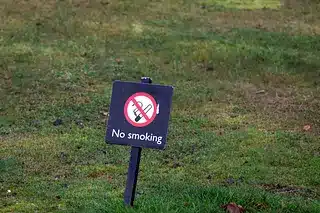Touqeer Ashraf and his younger brother, Tasaduq, are using a smartphone to make a short video of almond trees. They capture the smallest details, including the contrast between the blossoms’ white and light-pink petals, and how the branches dance in the gentle breeze.
Touqeer Ashraf narrates the segment in fluent Kashmiri, noting the significance of almond orchards for the Indian-administered Kashmir Valley, the stages of growth for almond trees, and the nutritional and economical value of almonds. “Badam kuelen chue kam kharche asea pazen yem kuel bachawen,” he says, explaining that it’s important to preserve these trees.
Mr. Ashraf, a resident of Gusoo village in Pulwama district, is the creator of Keashur Praw (“Kashmiri shimmering light”), an Instagram page with 117,000 followers and a YouTube channel with more than 55,000 subscribers. His goal is to help preserve and promote the Kashmiri language, which is at risk of extinction as other languages such as Urdu, Hindi, and English have taken root in the Kashmir Valley.
Why We Wrote This
A story focused on
Languages besides Kashmiri are taking root in the Kashmir Valley. But some residents see a path toward preserving their mother tongue.
“A platform with wide reach”
Mr. Ashraf began his efforts to promote Kashmiri in 2021, shortly after moving from Gusoo to pursue a master’s degree in geology at Kashmir University in Srinagar. He had been sitting in the campus garden one day when he heard some students making fun of those who spoke Kashmiri.
“They would mock them and call them gaemik [villagers],” Mr. Ashraf says. “I couldn’t understand how they could insult someone for using their mother tongue.”
He started by presenting simple Kashmiri words and phrases online and giving the English and Urdu translations. The positive feedback he received reinforced the value of his mission. He now shares everyday phrases, traditional sayings, and local proverbs in Kashmiri on his platforms, often paired with videos. He also provides information about native plants, cultural practices, and historical and religious sites.
“I received messages from Kashmiri people all over the world,” Mr. Ashraf says. “Those messages, in particular, gave me a strong sense of confidence, as my sole aim was to build a platform with wide reach.”
A long, rich history
Although India is one of the most linguistically rich countries in the world, its constitution officially recognizes only 22 national languages. At least 400 of the 780 languages spoken in India are considered at risk of extinction in the next 50 years.
An estimated 13.7 million people live in Jammu and Kashmir. Only 7 million speak Kashmiri, a language that gained official status only in 2020.
Kashmiri satirical poet Zareef Ahmad Zareef notes that Kashmiri is a classical language whose written history spans 5,500 years and was shaped by various rulers and official languages, including Farsi and Persian. And yet, “Kashmiri always endured alongside them,” he says.
But over the past several decades, rapid urbanization and the rise of English-language schools in the Kashmir Valley have pushed Kashmiri aside.
“These schools, through neglect and a flawed sense of progress, [discourage] children from speaking Kashmiri, creating a generation disconnected from their mother tongue,” Mr. Zareef says.
Eight kilometers (5 miles) from Mr. Ashraf’s village, Tariq Ahmad Khan has also become a popular creator of content in Kashmiri, with 169,000 YouTube subscribers and more than 44,000 Instagram followers.
One recent afternoon, Mr. Khan is resting at his home in the village of Dalipora after returning from his day job as a public school teacher and teacher trainer. He enjoys some tea and snacks, and then quickly washes the dishes and begins setting up a small filming area in the garden outside his house.
He heads toward his orchard with a steel basket and a knife in hand. He gathers some dandelions from the ground and places them carefully in the basket. Back in the garden, he separates the leaves and washes them thoroughly, and then returns to the filming area to start recording a recipe.
Speaking in Kashmiri, he explains the importance of dandelions in local tradition and how they can be cleaned, sun-dried, and stored. The flowers, he says, can be used to make tea or chocolates, while the nutritious leaves can be cooked or eaten raw in salads.
Through step-by-step cooking tutorials, Mr. Khan introduces dishes such as Tosha, a dessert with deep cultural roots, and Moshi Kraad, a traditional Kashmiri cheese, and explores their historical and cultural significance. Sharing traditional and lesser-known recipes exclusively in the Kashmiri language brings authenticity and cultural depth to his content.
“Language is our identity,” Mr. Khan says. “Losing it means losing our very sense of self.”
Mohammad Amin Bhat, president of Adbi Markaz Kamraz, one of the largest cultural and literary organizations in Jammu and Kashmir, notes that the region has endured political instability over the past three decades. Yet he says that while Kashmiri faces challenges, “It will not fade, because 80% of our people still live in villages, where the language lives in our atmosphere. It is spoken widely in markets, homes, and in every expression of joy or sorrow.”
Mr. Bhat says he admires Mr. Ashraf’s dedication to authenticity. And he says Mr. Khan uses his role as a teacher trainer wisely, challenging the old mindset that Kashmiri shouldn’t be spoken in schools. “He encourages children,” says Mr. Bhat.
Taken together, Mr. Ashraf’s and Mr. Khan’s efforts represent a quiet resurgence for the Kashmiri language.
“With technology, young people are reclaiming their roots and reshaping perceptions,” notes Mr. Zareef, the poet. “Societies go through dark phases, but bright moments return. And for Kashmiri, that time is now.”













